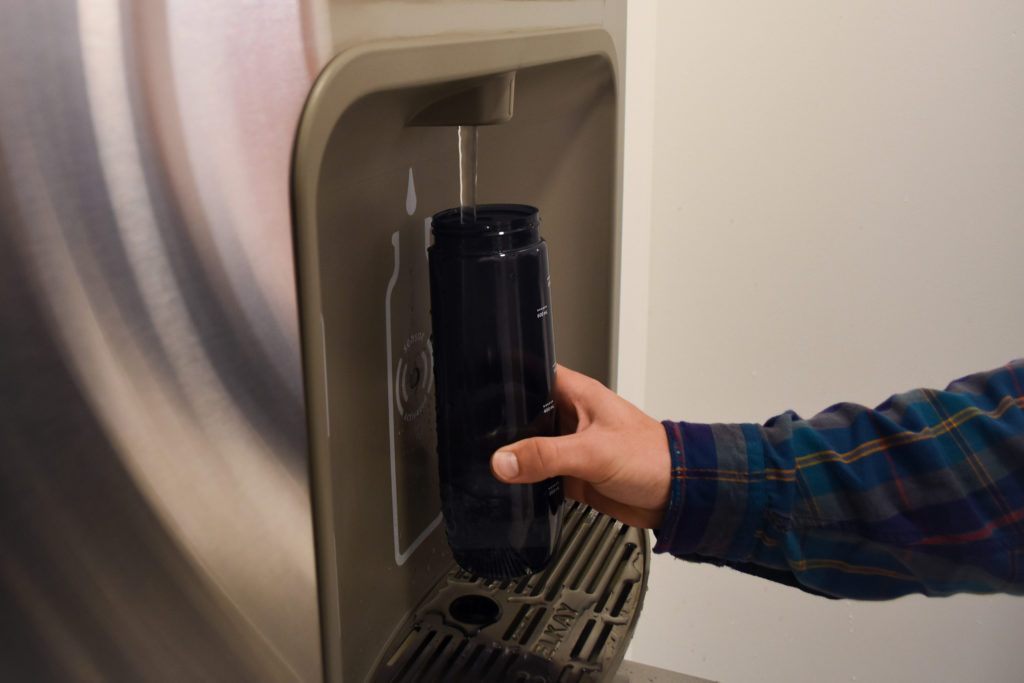For two years, the University has kept quiet about the progress of its water conservation goals.
Officials declined to say if GW has met its goal to reduce total drinking and plumbing water consumption by 25 percent by fiscal year 2018, which ended in June. They also declined to say if the University met its water conservation goals in 2016 to reduce spending on plastic water bottles by 50 percent.
The GWater Plan – which was released in 2010 – outlines the University’s efforts to reduce water consumption, increase rainwater retention, enhance water quality and reduce the use of bottled water on campus. The program aims to reduce GW’s impact on the Potomac and Anacostia rivers’ watersheds by 2021.
University spokesman Tim Pierce said the University is working on developing a report on GW’s sustainability goals that will be released before the end of the academic year. He said the process of compiling the report has allowed the University to take a “comprehensive look” at its original goals and analyze data.
“It has also allowed the University to receive feedback from stakeholders as to how we can work to improve our efforts in these areas,” Pierce said in an email.
Pierce said since the GWater Plan was released, the University has installed 67 water-bottle filling stations across GW’s three campuses.
“While we are making progress in this area, there is still more work to be done,” he said.
Pierce declined to say why the University didn’t make an announcement about the progress of its goals in 2016.
Pierce said many of the University’s buildings have cooling towers – concrete towers used for chilling water – to help regulate the temperatures of buildings. He said the cooling towers account for a large portion of the University’s potable water use, and that GW continually upgrades the cooling towers to reduce drinking water use on campus to improve efficiency.
Pierce said water efficiency for sinks, showers and toilets is an “ongoing priority” for the University through GW’s Eco-Building Program – an initiative where officials modernize equipment, like HVAC systems and lighting, in some buildings to reduce energy and water use. He said there are also rainwater harvesting systems on campus that capture stormwater for irrigation purposes.
“Looking ahead, the University will further evaluate how it uses fresh water, benchmark its goals against those of other universities, continue to identify reduction opportunities and modify related targets as needed,” he said.
University officials said in the GWater Plan that the University will conduct an annual review of the University’s water use for specific buildings on campus to “identify potential retrofit projects to improve the University’s overall water efficiency.”
Sustainability experts said a lack of transparency could mean the University isn’t meeting its goals – and that limited updates can actually hinder GW’s efforts because students and faculty are not included in water conservation strategies.
Jennifer Chavez – an attorney at Earthjustice, a nonprofit environmental law organization in D.C. – said GW should be more transparent about meeting its water conservation goals because a student’s tuition is often funneled into sustainability projects, and students should know exactly how their money is being used and what the University has achieved.
“You have a right to know if they’re using your dollars in a way that is actually effective and achieving the goals that this school is aiming for,” Chavez said.
Patrick McKee, the sustainability program manager at the University of Connecticut, said universities should continually inform students and faculty about the progress of their water conservation efforts because the updates can help engage the campus community in achieving future goals. He said officials at the University of Connecticut regularly provide updates about their sustainability goals to campus stakeholders.
“They can see how we are making progress towards a number of sustainability goals, water conservation being one of them,” McKee said.





